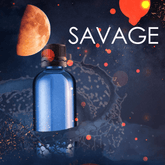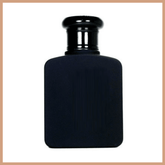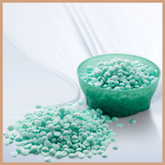5 Things Every Beginner Candle Maker Gets Wrong!
If you’re new to candle making or have made a couple of candles that have been a huge flop, then please don’t fret. The fact is, we all have to start somewhere and making mistakes is to be expected!
It’s perfectly normal and a big part of the learning process. Even the most experienced of makers and well-known industry professionals had to start from scratch just like you, with many mistakes being made along the way.

In fact, for every perfect candle we see shared within our community, there will probably be 15 failed attempts that came before it that weren't shared. It's important to remember this so as not to get discouraged early on. In fact, none of us start off knowing everything and it takes a lot of work, research, patience, and practice to get it right. However, we promise that cracking that first perfect candle is incredibly satisfying (and be sure to click that link to help you get started)!
Our guide today is here to help you to either pinpoint just what went wrong and explain how you can understand and learn from this going forward in your candle making journey or help you to avoid these mistakes yourself.
1. Starting out with too many supplies
Candle making can be fairly expensive when first starting out. We would advise to only buy the absolute essentials for what you’ll be needing - otherwise, you may feel overwhelmed and a little out of sorts. The first few months of your candle making journey will be predominantly spent testing different combinations of wax and wicks with your fragrances and chosen containers so it’s best to just stick to the bare minimum and slowly build your way up once you’ve perfected those first few fragrances.

Candle making can, at times, be quite stressful and patience is definitely needed, especially whilst waiting to be able to test your creations! We would recommend starting out with around 3-5 fragrance oils. Limiting yourself can make it less stressful in the long run and will enable you to go at your own pace without feeling rushed plus, you’ll be able to see it as fun and fully enjoy the process.
The bare minimum essentials we would recommend for starting out candle making are:
- 15-25 glasses, all the same style (around 5 per fragrance oil to start with)
- A variety of wicks suited to the diameter of the candle glass plus a size bigger and smaller in each type
- 3-5 fragrance oils, 50ml – 100ml size to start (you can purchase our 10ml samples beforehand to see if you like the oils before proceeding to buy bigger sizes if you wish)
- 1kg of container wax to include different brands so you can test initially to see which you prefer working with
- Colour dyes if you wish to use colour (liquid candle dye or dye chips)
- Double boiler (stainless steel pan and melting pot/glass/stainless steel jug) or bain marie
- Stainless steel or glass pouring jugs
- Stirring spoons (metal or wooden)
- Thermometer (milk or digital)
- Glue dots or wick stickers
- Digital scales
- Wick holders or lollipop sticks with holes through the centre
- Old tea towels
- Nitrile gloves
- Apron
- Chemical mask
- Notepad and pen (for note making)
As you can see above there are quite a few different materials and ingredients mentioned, some of them may be already available within your home such as a pan, jugs, thermometer, scales etc so will save you some money initially.
2. Not adding the correct amount of fragrance oil

If your candle doesn’t smell much (or at all) after making and curing, one of the factors may be the amount of fragrance oil you’ve added. You may have added too much fragrance oil or simply not enough.
This could be that your calculations were incorrect for the percentage you’ve used or you have used a percentage of oil that the wax can’t hold effectively (i.e. your wax holds a maximum of 6% but you’ve gone straight in and used 10%!).
This is such an easy mistake to make and one we’ve all likely made at some point. This part of the making process can be even more confusing especially, if you’ve been given advise from others who state they always use 10% regardless of what wax they use.
Each wax has a different maximum load of fragrance oil it can hold. Some can hold up to 6%, some hold up to 10% and others may hold more. Thorough research into the wax itself prior to using for the first time can help you greatly and save you some money in the long run.
Always remember to weigh your wax in grams too (weight not volume). For example one of our 20cl Karen glasses holds 160g wax and fragrance oil combined which means if your wax could hold a maximum of 10% fragrance, assuming you used 8% as a starter to testing, you’d need 147.2g of wax and 12.8g of fragrance oil (160 x 0.08 = 12.8) giving a total of 160g.
It’s also worth noting that adding more fragrance oil doesn’t always result in the best scent throw once the candle has cured. In fact this can cause the candle to burn poorly, so it’s always recommended to test a few different percentages at a time within the wax's recommended fragrance load to see which burns (and smells!) best.
3. Testing your candle too soon

Testing a candle before it has cured for the recommended time frame may not give you the result you expected. This part of the making process requires some patience but believe us, the wait will be worth it for the end result!
What is curing/cure time in candle making?
This step is such an important part of the candle making process! The cure time/curing process allows the fragrance oil to bind with the wax and wick effectively, ensuring the best burn and fragrance performance. This may mean leaving your candle for between 48hrs – 2 weeks untouched before you can enjoy test burning it. The cure time is totally dependent on the wax type used also. Paraffin waxes are usually cured within 48hrs, paraffin/soy blends may need around 1 week whilst other waxes such as soy and vegetable types may need a full 2 weeks.
As we’ve mentioned above, researching the wax before use will make this part of the process so much easier as you’ll know exactly how long you need to wait once your candles are made.
4. Using the same brand/size wick for every fragrance oil, wax and container combination

When it comes to candle making, a major factor (and probably the most difficult part) to take into account is the type and size of wick you use. The same wick may not work with every fragrance oil. Fragrance oils have individual densities so some fragrances may work better with a slightly bigger wick, some fragrances may work better with a slightly smaller wick. Some fragrances may even require a different type of wick altogether!
You might use for example our Coconut & Waterfall Blooms fragrance oil with KeraSoy Container wax in a 20cl glass with a Stabilo 10 wick but then use the same wick with Winter Fae fragrance oil in KeraSoy Container wax and find that the burn isn’t the same. You may need to use a Stabilo 8 or 12 wick or try a totally different wick suited for use in soy wax such as our TCR brand.
Getting the right combination can take weeks (sometimes months) to perfect and your tests could range from between 5 – 15 candles per fragrance oil before you find what works best. The use of colour in your candles may also impact how the wick performs so a handy piece of information to bare in mind.
We’d also advise you to buy your candle supplies from a reputable supplier like ourselves, as the wicks we sell are rigorously tested by their respective manufacturers and you can begin to determine which size you’d need using our handy wick sizing guide. Any old wick simply won’t do in this instance!
5. Selling your creations without the appropriate labelling or thorough testing

So you’ve mastered a few fragrances with your chosen wax and you’ve decided you want to start gifting to friends and family or selling and turning your little hobby into a business. Many beginners don’t actually look into the legalities surrounding selling candles and simply start selling with either no CLP labels or just a simple safety label. Unfortunately a safety label won’t suffice on candles that contain fragrance oil.
Every beginner candle maker should at least have the basic knowledge of what a CLP label is regardless of if they are making for personal use or gifting/selling. If making for personal use, there’s always the chance that you may wish to make a candle as a gift for a friend which would need to then have a CLP label present prior to gifting.
We have more information around candle safety and warning labels and what you need to know here.
What is a CLP label?
A CLP label is a legal requirement on all products that contain a hazardous substance such as fragrance oil. This label specifies any allergens the fragrance oil may present as well as any relevant warnings and precautionary statements plus pictograms if needed. This label also contains your details (name, address, contact number) so that should any issues arise, the customer or whoever has received your candle creation can easily get in touch with you.
Every fragrance oil you use will have its own CLP information. Sadly there isn’t a universal CLP label as all fragrance oils contain different chemical compositions and as such, require their own individual labelling.
At Craftovator, we provide the CLP templates at 10% for all of our fragrance oils so you can make your own candle CLP labels easily. If you didn’t want to make these yourself, there are professional label companies out there who can do this for you.
Check out our full guide on what you need to know about CLP Labelling for Candles here.
What’s involved in testing a candle?
Another aspect of selling/gifting your candle creations that most beginners don’t do or aren’t fully aware of is undertaking appropriate testing on each candle combination they make. A ‘burn test’ is highly recommended to be done prior to gifting or selling and in most cases even if you’re simply making for personal use. Thorough testing ensures you’re getting the very best out of your candle.
A ‘burn test’ is made up of many different sections including:
- Burn tests – how the candle is performing burn wise every 3-4hrs and covers how well the candle is burning across the diameter of the container and other points such as if there are sink holes, tunnelling or soot residue
- Fragrance tests – how the candle smells when burning (known as 'hot throw') as well as when it is unlit (known as 'cold throw'), how far away you can smell the candle, is it a strong scent or a subtle scent?
- Wick tests – how well the wick is performing, is it smoking, mushrooming or going out?
Other aspects of a burn test also include jotting down temperatures worked to, percentage of fragrance oil used, wax and wick type/size used, times and dates the candle was made and first burned and the method of making the candle you’re going to be testing.
A burn test essentially ensures the candle you’ve made is burning correctly and safely and, of course, smells great!
This part of candle making really can’t be skipped and it’s worth noting that such tests can take several weeks (if not months) due to wax curing times and full candle burn tests themselves may take several days. For example, a 20cl glass containing 160g of wax and oil combined may take at least 4 days to fully test assuming you do two 3-4 hourly tests per day.

To make your testing easier, we've created a candle trouble-shooting guide here which might be helpful.
As you can see there are a lot of factors and components that make up the whole process of making candles. The mistakes you make along the way will help you in learning how to correct them, which in turn will make it so much easier to proceed with your candle making journey. We hope these tips will help to shortcut some of the harder lessons you’ve learned and remember, practice makes perfect!
There will be a further blog post following on from this, outlining other common misconceptions or mistakes, so please stay tuned for that upcoming post to learn more. In the meantime, why not have a look at some of our best-selling waxes to get started on your journey?








3 Comments
what is the difference between your fragrance oils and those that I get from Michaels, Hobby Lobby, etc?
I am a bigenner I am been using yours beginners guide z d is helping me I buy my fragrance from your website I am very happy only I never get too buy the wax because is out of stock
I am a bigenner I am been using yours beginners guide z d is helping me I buy my fragrance from your website I am very happy only I never get too buy the wax because is out of stock
Leave a comment
All blog comments are checked prior to publishing